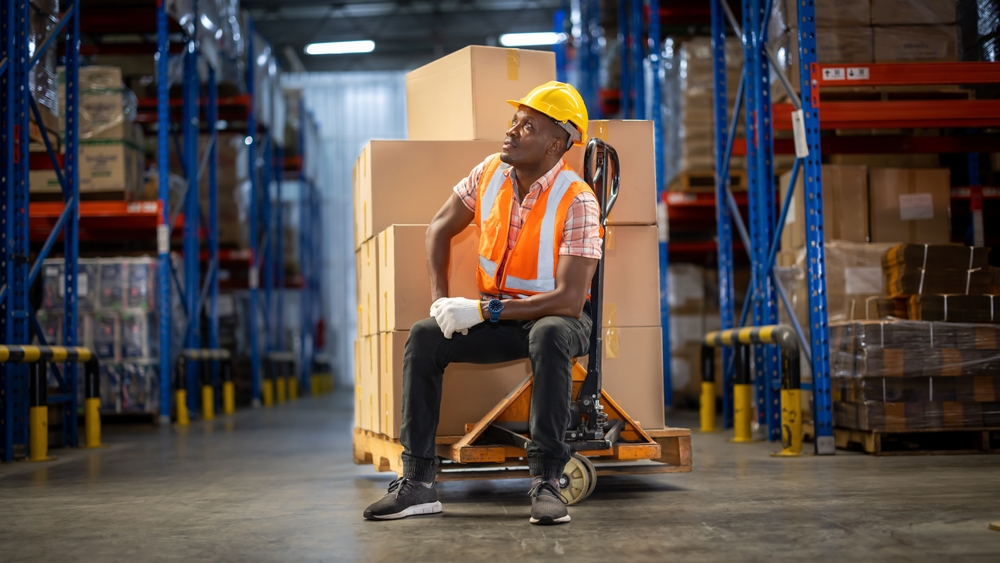There has been lots of talk of inventories – first, shortages had people hamstering away insane amounts of toilet paper. Then, overflows led to warehouse issues and reduced orders with vendors and manufacturers. What next? More wild swings of the shipping seesaw? Or are we finally approaching a balance where manufacturing, trade and shipping can return to normal?
As we observed in our recent TL and LTL Market Update for June, there are many signals in the market right now: declining diesel prices, lower spot rates, a slight increase in reefer rates and a clear decrease in truck tonnage for two months running.
What’s driving these indicators?
A big part of it (and something on everyone’s mind) is the economy and consumer confidence.
Consumer demand and consumption
Back in the COVID days, consumers purchased goods at an unprecedentedly high rate. If a big bowl of your favorite flavor of ice cream offered some respite from social isolation then your only option was to pack your freezer full of the stuff. Pandemic rationing and stockpiling was how many of us stayed afloat, and distribution centers were no exception.
But that changed last spring. Suddenly, restrictions ended and services became available. Going out for ice cream ceased to be some whimsical fantasy of yesteryear.
The result? The pendulum swung the other way. Merchant warehouses became stuffed with surpluses as retailers pulled back on orders while they slowly sold their way through all that excess inventory. The effect was global. Overseas imports from foreign suppliers decreased. Descartes Systems Group reported a 23% decline in containers into West Coast ports for the first quarter of 2022 compared to the previous year.
But that's changing yet again as logistics networks rebalance.
Now retailers have switched from destocking to sending goods out to distribution centers and stores, even as the shadow of economic uncertainty looms. The pendulum swing is small but measurable, with the Census Bureau reporting a 1.2% inventory expansion at US general merchandise stores in March.

The Fed's been working to slow the economy and cool off inflation. Demand for big-ticket items that may require financing slowed significantly. However, consumer spending was still stronger than expected, keeping the economy from a full recession. In April, New York Times reported that American consumers are spending but at a scaled-back rate, raising 0.4% after a two-month decline.
Consumer confidence
Consumer confidence, however, is a dicier matter. Associated Press reports that consumer purse strings have tightened significantly no fewer than four times in the past five months. Moreover, the decline in confidence was more pronounced among older Americans, a segment of the population traditionally associated with risk-averse purchasing.
What does that mean for the near future?
Well, consumer spending has been buoying an economy that has been creeping ever closer to recession levels for over a year. Consistent degradation of consumer confidence will continue to erode consumer spending and that, of course, further increases the likelihood of a recession.
But consumer confidence isn’t everything. Merchants and retailers are seeing a more positive horizon ahead.
If Target and Walmart say it, it must be so
Let's take a step back and look at all this from a shipping lens.
Gone are the days when merchants rushed goods into the US any which way they could, including chartering private cargo ships to sail around port delays. In hindsight, that solution made more new problems than it solved. Case in point: The dreaded empty shelves led to crazy orders resulting in stockpiles spilling out of warehouses and into overflow holding areas. Now that inventories are starting to deplete to more normal levels, merchants and retailers are optimistically revisiting the law of supply and demand.
We know the demand is there -- yes, consumers are still spending. But because supplies no longer floweth over in excessive inventories, merchants and retailers forecast that orders for goods will increase, and with it, shipping. Cue the moment when logistics professionals the world over exhale in relief. (Well, in the US, at least. Or maybe only in California, where they practice deep breathing and meditation.)
According to The Wall Street Journal’s The Logistics Report, big retailers have nearly scaled down their excess inventories and are ready to stock their shelves with new merchandise this fall. This offers a light at the end of the long, dark tunnel for freight carriers as revived restocking will hopefully jumpstart shipping.
Target reported 16% lower inventories last quarter (over the same period the previous year), and WSJ quoted Target’s COO John Mulligan as saying that the overstocking that weighed on the company last year was “in the rearview mirror” and that the retailer was turning toward getting fresh merchandise into stores for the fall.
Likewise, Walmart cut inventories by 9% over the past year by removing millions of dollars of goods from their balance sheets to free up space in their jammed supply chains. “In terms of inventory, we’re in good shape,” Walmart Chief Executive Doug McMillon told WSJ. “In-stock is improving, and excess inventory keeps coming down. We see it in the numbers, and I’m seeing it on store visits.”
 Plan for the scale-up of transportation and logistics with IL2000
Plan for the scale-up of transportation and logistics with IL2000
The logistics world is different than it was pre-pandemic and during the Great COVID Onslaught. Our consulting engagement team is hearing murmured questions from companies looking for new ways to plan for the seasonal uptick expected in the fall.
“As we speak with prospects, conversations are turning to inventory levels flattening out, therefore creating a need for a solution to support their fall and holiday season shipping push,” explains Brooks Wise, VP of Sales. “IL2000's nimbleness allows us to react quickly to these trend changes, executing a transportation solution and plan in a very short amount of time.”
How can you ensure the smooth shipping of your goods to your customers?
Use reputable carriers, include all necessary information when making a quote and scheduling a pickup, and of course, partner with a logistics partner who treats your business as if it were their own.
Let’s talk about how we can prepare you for the shipping rebound.

